 November 9, 2017 John E. Ross, KD8IDJ, Editor
| ||||||||
Announcing: The ARRL International Grid Chase A new and exciting operating event will kick off on January 1, 2018, at 0000 UTC (New Year's Eve in US time zones), when the ARRL International Grid Chase gets under way. The year-long event hopes to build on the success of the highly successful 2016 National Parks on the Air (NPOTA). The objective is to work stations on any band (except 60 meters) in as many different Maidenhead grid squares as possible, and then upload your log data to ARRL's Logbook of The World (LoTW). Registration in LoTW is free, and it costs nothing to participate Many hams are familiar with grid squares from the VHF/UHF and satellite realms, and everyone lives in one. ARRL's VUCC is based on grid squares, and some contests on HF, VHF, and UHF also use them as a scoring factor.
If you don't know your grid square, David Levine, K2DSL, has an online calculator. Just enter a postal address, ZIP code, or even a call sign, and his site will tell you the grid square for that location. For example, enter "W1AW" and the site will return "FN31pr." For the purposes of the ARRL International Grid Chase, though, just the two initial letters and the two numbers that follow (e.g., FN31) are all you'll need to know. Once you get active in the chase and start uploading your log data, each new grid square contact confirmed through LoTW will count toward your monthly total. Getting started is simple. Turn on the radio and just call CQ or "CQ Grid Chase" or listen for others doing the same. Make a contact, exchange grid squares, log it, and move on to another. At the end of each month, your totals on the Grid Chase leader board will reset to zero, although the system retains these to determine top finishers in various categories at the end of the year.
Any contact you make in 2018 can count toward your Chase score; it doesn't have to involve an exchange of grid squares. As long as the other operators also participate in LoTW, you'll get credit automatically when they upload their logs. This means that contest contacts also count, as will contacts with special event stations or other on-air activity that uses LoTW to confirm contacts. Some radio amateurs live in sparsely populated grid squares, and if you're one of those, you could find yourself handling a pileup! Expeditions to hard-to-reach or rare grid squares undoubtedly will evolve. You also can travel to one of those grid squares yourself. Some vehicle or handheld GPS units can be set to display when you are in a particular grid square. Apps are available for smartphones or tablets, such as Ham Square for iOS devices or HamGPS for Android devices. There are no restrictions on modes or bands, as long as they are legal. Satellite contacts are valid for the Chase. The event is open to all radio amateurs. Full details of the ARRL International Grid Chase will appear in the December 2017 issue of QST. The digital edition is available on Friday, November 10. For more information, contact the ARRL Contest Branch. Read more. FCC Chairman Recognizes Amateur Radio in Praising those Assisting Puerto Rico Wrapping up a 2-day visit to Puerto Rico on Monday, FCC Chairman Ajit Pai, recognized Amateur Radio volunteers as he praised those who turned out to help the stricken commonwealth in the wake of Hurricane Maria.
"Additionally, Amateur Radio operators, broadcasters, cable operators, fixed wireless companies, wireline carriers, and mobile providers have stepped up to the plate, working overtime to connect the disconnected," Pai continued. "All of this work reflects the ethos I saw on many signs and t-shirts during my time on the island: 'Puerto Rico Se Levanta' [Puerto Rico is Rising]." Pai said recovering from Hurricane Maria will require an all-hands-on-deck effort, and the FCC "remains committed to doing everything we can to help restore communications networks as quickly as possible." In October, the FCC granted ARRL's request to waive current Amateur Radio rules to permit data transmissions at a higher symbol rate than currently permitted, in order to facilitate hurricane relief communications between the continental US and Puerto Rico. The temporary waiver will enable the use of PACTOR 3 and PACTOR 4. "The path to recovery has met several challenges, most notably the lack of power and functional infrastructure," Pai said. "One thing is clear: overcoming these challenges won't be easy." Read more. Emergency HF Net Convened in Colombia in Wake of Landslide, Flooding Radio amateurs in Colombia were put on Orange Alert on November 8, and an HF net activated on 7.117 kHz in the wake of an avalanche of mud and rocks the previous evening on the La Paila River in the town of Corinto. The incident at dusk killed at least five and injured dozens more. Upward of 20 people are missing after a flood of mud and debris swept through the small town some 60 kilometers southeast of Cali.
"The Emergency Network of radio amateurs in Cali and Popayan are working together at this time to keep the risk management authorities informed about injured and missing people and temporary shelters," Juan Manuel Yanguas, HK5AKN, Director and Coordinator of the Emergency Service for Liga de Radioaficionados de Ca, said on November 7. "We continue monitoring and will inform about more risks." Yanguas said the Corinto hospital had been evacuated, and a hospital facility has been set up in a camp in the city's principal park, and the population is being evacuated to higher ground. Relief agencies have evacuated the community to the village of San Rafael. The spreading footprint of the avalanche had affected some 60 families -- about 300 people in all. A half-dozen injured were taken to the local coliseum, which was activated as a shelter, and a crisis room was installed at the Corinto Fire Department command center. -- Thanks to IARU Region 2 Emergency Coordinator Cesar Santos, HR2P; media reports The Doctor Will See You Now! "NVIS: Near Vertical Incidence Skywave" is the topic of the new (November 9) episode of the "ARRL The Doctor is In" podcast. Listen...and learn!
Every 2 weeks, your host, QST Editor-in-Chief Steve Ford, WB8IMY, and the Doctor himself, Joel Hallas, W1ZR, will discuss a broad range of technical topics. You can also e-mail your questions to doctor@arrl.org, and the Doctor may answer them in a future podcast. Enjoy "ARRL The Doctor is In" on Apple iTunes, or by using your iPhone or iPad podcast app (just search for "ARRL The Doctor is In"). You can also listen online at Blubrry, or at Stitcher (free registration required, or browse the site as a guest) and through the free Stitcher app for iOS, Kindle, or Android devices. If you've never listened to a podcast before, download our beginner's guide. New Book: ARRL's Best of The Doctor is In Now Shipping For more than a decade, Joel Hallas, W1ZR, has been offering ideas and advice to radio amateurs in QST's "The Doctor is In" column. Each month he educates, dispenses cures for troublesome problems, and indulges in more than a little technical myth-busting. Now the Doctor's advice is available in Volume 1 of ARRL's Best of The Doctor is In.
If you're puzzling over how to improve your station antennas or how to solve a problem with your antenna system, chances are someone else has shared the same questions with -- and received helpful answers from -- The Doctor. Having ARRL's Best of The Doctor is In at hand is the next best thing to a visit from W1ZR himself! ARRL's Best of The Doctor Is In is available from the ARRL Store or your ARRL Dealer. (ARRL Item no. 0741), ISBN: 978-1-62595-074-1, $22.95 retail, special ARRL Member Price $19.95). Call 860-594-0355 or, toll-free in the US, 888-277-5289. It is also available as an e-book for the Amazon Kindle. Amateur Radio Volunteers Continue New York City Marathon Tradition More than 250 hams from all directions on the compass converged on New York City this past weekend to support communications for the 2017 New York City Marathon on Sunday, November 5. Tata Consultancy Services is the event's primary sponsor. Along with more than 50,000 runners and an estimated crowd of some 2.5 million spectators, Amateur Radio volunteers were on the scene to assist in numerous communications and other race-related activities.
Hams still staff all 26 mile stations along the route, along with medical facilities set up near most mile stations, as well as a large communications center in Central Park. Amateur Radio operators act as course marshals, closely observing the participants, calling in for medical assistance, relaying logistical requirements, and, in general, lending a hand as needed. When a runner drops out of the race, even for a short period, hams alert medical resources and advise NYPD officers nearby. A downed runner may get a bottle of fluids, a package of high-sugar candy, and the jacket of a ham volunteer draped over his or her shoulders to protect from a chilly shock. The task of marshaling all the ham radio resources for the New York City Marathon falls to Deborah Kerr, KC2GPV, who succeeded Mendelsohn as Amateur Radio Communications Director for the NYC Marathon. This past weekend, she was on her game. -- Thanks to Tom Gallagher, NY2RF. Amateur Radio Poised to Bring a Brighter Future to Dominica Despite the devastating blow Hurricane Maria dealt to the Caribbean island nation of Dominica, Brian Machesney, K1LI, is optimistic that the recent delivery of Amateur Radio gear to the island will help to expedite ongoing recovery and better prepare Dominica for any similar disasters in the future. Machesney is recently back from Dominica, where he and others helped deploy the nearly 600 pounds of radio equipment, transported by air, thanks to Dave Bridgham, N1AHF. Assisting him was Brian Lloyd, WB6RQN, who circumnavigated the globe earlier this year.
"I wish we could have accomplished more in the 10 days we were on the ground in Dominica but, as any reasonable person would concede, the weeks immediately following the region's most devastating hurricane in living memory were not the best time to deploy new radio equipment," Machesney said. Nonetheless, the gear was delivered safely to the Dominica Amateur Radio Club, Inc. (DARCI). Many DARCI members lost everything in the hurricane. All of the ham radio gear was donated or purchased with donations. Some of the primary players included the Yasme Foundation, the Foundation for Amateur International Radio Service (FAIRS), and Yaesu. "The first challenge the hams faced in providing communications after the hurricane was the lack of power to recharge their HT batteries," Machesney said. "The solar-charged battery power systems supplied by FAIRS were quickly dispersed to stations from Jimmit to Castle Comfort where, in addition to powering ham equipment, they served to recharge neighbors' mobile devices and further raised ham radio's profile in Dominica."
Machesney sees a productive future on Dominica for HF Automatic Link Establishment (ALE), a mode widely used by the government and the military. Through a cooperative arrangement with the Dominica Air and Seaports Authority, HF ALE transceivers, purchased by the Yasme Foundation, were installed at a station at Canefield Airport, with a companion station at the larger Douglas-Charles Airport. A third HF ALE station was set up at the DARCI club station, J73Z, and powered by solar panels. FAIRS provided six solar-charged battery power kits, Machesney said. Yaesu also supplied 10 FT-8900 transceivers and 30 FT-65R handheld transceivers and accessories. Generous donations to a GoFundMe campaign provided the cash to purchase antennas and other gear. "All parties are thoroughly sold on HF ALE as a valuable addition to their local and long-range communication capabilities," Machesney said. "Once the state of emergency has passed, the HF ALE stations will be re-deployed to private amateur stations strategically located around the island." He hopes that HF ALE will augment the island's VHF/UHF repeater coverage. "It was a great, cooperative effort that resulted in an integrated package of equipment that should 'keep the lights on' for the foreseeable future," Machesney said. RadFxSat (Fox-1B) Launch Delayed; AMSAT Asks for Patience During Commissioning The launch of the Delta II vehicle carrying RadFxSat (Fox-1B) and other payloads has been delayed, due to a faulty battery on the booster, United Launch Alliance (ULA) announced on November 6. The launch now is scheduled for no earlier than Tuesday, November 14. RadFxSat is one of four CubeSats making up the NASA ELaNa XIV mission, riding as secondary payloads aboard the Joint Polar Satellite System (JPSS-1) mission, which will launch from Vandenberg Air Force Base, California.
AMSAT Vice-President Engineering, Jerry Buxton, N0JY, said RadFxSat/Fox-1B will automatically come up in beacon mode, transmitting a beacon and voice ID ("RadFxSat Safe Mode") every 2 minutes, starting about 50 minutes after deployment. He said AMSAT command stations will want to see voltage and current data to determine that the spacecraft is healthy and to conduct various tests before opening it up for general use. Telemetry should begin about 55 minutes after deployment. "[F]or the next 72-96 hours at least, we look for successful startup, watch the general health and function as the satellite begins to acclimate to space, and perform the on-orbit checkout," Buxton said. Ground stations are invited to continue uploading received telemetry for the life of the satellite. "You can help AMSAT and everyone waiting to get on the air with RadFxSat tremendously, by capturing RadFxSat telemetry," Buxton said. He called on the satellite community to be "polite and patient" as RadFxSat is commissioned. Read more. -- Thanks to AMSAT News Service Yasme Foundation Announces 2017 Excellence Awards and Supporting Grant
Their contribution may recognize technical, operating, or organizational achievement. The Yasme Excellence Award consists of a cash grant and an individually engraved crystal globe. Receiving Yasme Foundation Excellence Awards were:
Receiving a Yasme Foundation Supporting grant was:
Canada C3 Voyage Carrying WSPR Concludes; Beacon May Remain Active on Return Trip The epic Canada C3 voyage of the Polar Prince to commemorate Canada's 150th Anniversary of Confederation celebration ended successfully on October 28. Over the course of the 150-day expedition from Toronto, Ontario, to Victoria, British Columbia via the Northwest Passage, the CG3EXP WSPR HF beacon was received on every continent except Antarctica, CG3EXP trustee Barrie Crampton, VE3BSB, told ARRL this week.
"The Ultimate 3S beacon transmitter made 64,800 transmissions that resulted in 397,964 uploads to WSPRnet.org," Crampton said. The CG3EXP WSPR beacon -- which transmitted on 40, 30, and 20 meters -- provided an opportunity for the Amateur Radio community to follow the vessel's progress and share in the celebration. However, the end of the voyage does not mean the end of the beacon's transmissions. Crampton said the CG3EXP beacon "will likely remain on the air as the Polar Prince returns to the east coast of Canada via the Panama Canal." The deadline for Radio Amateurs of Canada (RAC) Canada C3 Expedition Award submissions is November 30. The purpose of the award was to track the voyage of the Polar Prince from Toronto to Victoria and to study radio propagation in the Arctic regions of Canada. Stations listened for WSPR signals from CG3EXP and recorded the 6-character Maidenhead grid square that was transmitted, as well as the location of the ship. The WSPR beacon consists of a QRP Labs Kits U3S beacon transmitter. The antenna is a 30-meter resonant end-fed dipole from MyAntennas.com, sloping at 62° up to the mid-mast. Earlier this year, Crampton explained that the Polar Prince did not carry a full-blown Amateur Radio station because of logistics, space, technical requirements. A WSPR beacon was far easier to implement, he said. Read more. -- Thanks to Barrie Crampton, VE3BSB, and RAC MarCom Director Alan Griffin. In Brief...
Mother, Daughter Radio Amateurs Active from Nepal: Kalpana Kharel, 9N1MM, and her daughter Tejaswita, 9N1DX, both are active radio amateurs from Nepal's capital of Kathmandu. Husband and father Satish is 9N1AA. Both women are reported operational on HF, mostly on RTTY and FT8. Kalpana Kharel is believed to be the first female Amateur Radio licensee from Nepal, and her daughter is the youngest ever to obtain a ham license there (an American, Jinny Beyer, 9N1RA, was active in the 1970s). Tejaswita Kharel, who attends Rato Bangala School in Patan, Nepal, said on her QRZ.com profile that she is working to improve her Morse code skills. "I was very keen to learn about ham radio since my childhood," she said there. "I always observed RTTY QSOs of my dad. So, I am more comfortable with digital modes." QSL cards for 9N1MM and 9N1DX are said to be in production. 9N1MM, now held by Kalpana Kharel, once was the famous call sign of Father Marshall Moran, the first radio amateur active in Nepal from the 1950s until the early 1990s. Getting It Right The article "CQ World Wide SSB Event Inaugurates Fall Contest Season," in the November 2 edition of The ARRL Letter, contained inaccurate information. The CQ World Wide SSB contest claimed score for K3LR was the top US high-power multi-multi score. The K7RA Solar Update Tad Cook, K7RA, Seattle, reports: No sunspots have been visible so far in November. The average daily sunspot number dropped from 17.7 last week to zero this week, November 2-8. The average daily solar flux declined from 75.4 to 70.8, while the average daily planetary A index went from 6.4 to 15.6, and average mid-latitude A index rose from 4.7 to 12.4.
Predicted planetary A index is 38, 30, 26, and 12 on November 9-12; 5, 8, and 16 on November 13-15; 10 on November 16-17; 5 on November 18-19; 20 on November 20-22; 5 on November 23-28; 10 on November 29-30; 5 on December 1-2; 10 and 27 on December 3-4; 30 on December 5-6; 28, 25, and 10 on December 7-9; 5 on December 10-11; 10 on December 12-14; 5 on December 15-16; 20 on December 17-19, and 5 on December 20-23. Sunspot numbers for November 2-8 were 0, 0, 0, 0, 0, 0, and 0, with a mean of 0. The 10.7-centimeter flux was 73.6, 73.2, 72.1, 71.1, 69.4, 68.3, and 67.6, with a mean of 70.8. Estimated planetary A indices were 8, 9, 4, 3, 2, 36, and 47, with a mean of 15.6. Estimated mid-latitude A indices were 12, 7, 2, 1, 0, 26, and 39, with a mean of 12.4. Send me your reports and observations. Just Ahead in Radiosport
See the ARRL Contest Calendar for more information. For in-depth reporting on Amateur Radio contesting, subscribe to The ARRL Contest Update via your ARRL member profile e-mail preferences. Upcoming ARRL Section, State, and Division Conventions
Find conventions and hamfests in your area.
. .
Subscribe to...
Free of charge to ARRL members...
Find ARRL on Facebook! Follow us on Twitter, Snapchat @ARRLHQ, and Instagram! | ||||||||
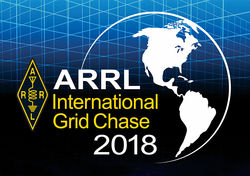 The Maidenhead grid square system divvies up the entire globe into 324 fields, each containing 100 grid squares 1° latitude × 2° longitude in size. With 32,400 potential grid squares, it's not likely that anyone will run out of challenges, even though some grid squares are surrounded entirely by water or are in areas that are uninhabited or difficult to access.
The Maidenhead grid square system divvies up the entire globe into 324 fields, each containing 100 grid squares 1° latitude × 2° longitude in size. With 32,400 potential grid squares, it's not likely that anyone will run out of challenges, even though some grid squares are surrounded entirely by water or are in areas that are uninhabited or difficult to access.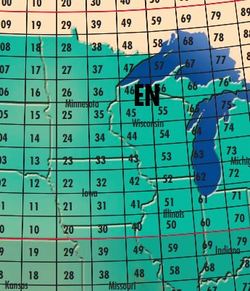
.jpg) "[T]he worst of tragedies can also bring out the best in people. I saw that firsthand during my 2 days in Puerto Rico," Pai said. "Everyone is pitching in: the people of Puerto Rico helping their neighbors, hardworking Federal Emergency Management Agency staff -- including communications personnel in Emergency Support Function #2 -- the dedicated regulators of the Puerto Rico Telecommunications Regulatory Board, and the FCC's own Roberto Mussenden, who has spent the past month away from his family on the mainland in order to help the island where he grew up."
"[T]he worst of tragedies can also bring out the best in people. I saw that firsthand during my 2 days in Puerto Rico," Pai said. "Everyone is pitching in: the people of Puerto Rico helping their neighbors, hardworking Federal Emergency Management Agency staff -- including communications personnel in Emergency Support Function #2 -- the dedicated regulators of the Puerto Rico Telecommunications Regulatory Board, and the FCC's own Roberto Mussenden, who has spent the past month away from his family on the mainland in order to help the island where he grew up."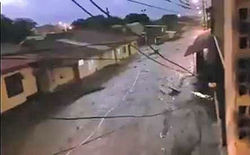
 Sponsored by
Sponsored by 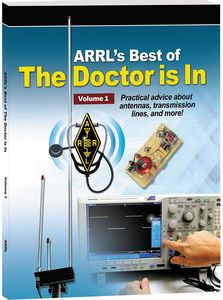 In this series, ARRL has gathered the most frequently asked questions, as well as Joel's detailed answers, on the topic of antenna systems. Many answers include comprehensive illustrations. You'll find helpful information about VHF/UHF antennas, HF wire antennas, HF vertical antennas, HF Yagi antennas, and transmission lines.
In this series, ARRL has gathered the most frequently asked questions, as well as Joel's detailed answers, on the topic of antenna systems. Many answers include comprehensive illustrations. You'll find helpful information about VHF/UHF antennas, HF wire antennas, HF vertical antennas, HF Yagi antennas, and transmission lines.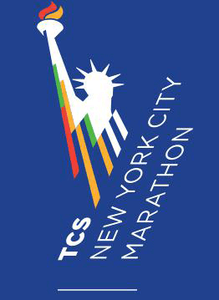 Ham radio and the Marathon have a relationship dating back to the 1970s, when former ARRL Hudson Division Director and later First Vice President Steve Mendelsohn, W2ML (then WA2DHF, now Silent Key), began organizing a cadre of ham radio volunteers to support race communications. In an era before cell phones and widespread deployment of digital mobile radio, Mendelsohn and his volunteers provided a major share of the communications, logistical, and organizational support for the growing event. Over the past decade and a half, as the Marathon has become more and more prominent as a major international athletic gathering, dependence on Amateur Radio has been partially supplanted by non-volunteer, paid resources.
Ham radio and the Marathon have a relationship dating back to the 1970s, when former ARRL Hudson Division Director and later First Vice President Steve Mendelsohn, W2ML (then WA2DHF, now Silent Key), began organizing a cadre of ham radio volunteers to support race communications. In an era before cell phones and widespread deployment of digital mobile radio, Mendelsohn and his volunteers provided a major share of the communications, logistical, and organizational support for the growing event. Over the past decade and a half, as the Marathon has become more and more prominent as a major international athletic gathering, dependence on Amateur Radio has been partially supplanted by non-volunteer, paid resources..jpg)
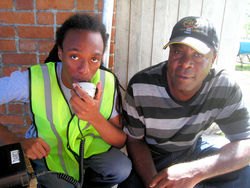
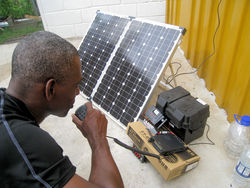
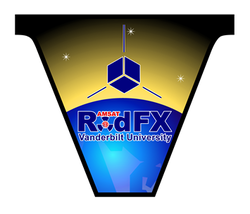 RadFxSat is a partnership with Vanderbilt University's Institute for Space and Defense Electronics (
RadFxSat is a partnership with Vanderbilt University's Institute for Space and Defense Electronics (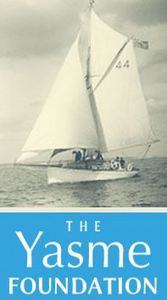 The
The 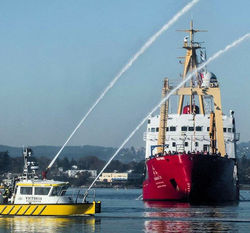
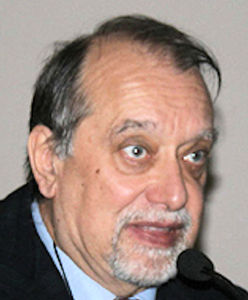 ARI President Mario Ambrosi, I2MQP, SK: Associazione Radioamatori Italiani (ARI) President Pietro "Mario" Ambrosi, I2MQP, of Rodano, Millepini, Italy, died November 6 after serving for several decades at the head of Italy's national Amateur Radio organization and IARU member society. An ARRL member, DXCC card checker, and 2005 CQ Amateur Radio Hall of Fame inductee, Ambrosi was credited with growing ARI and with bringing younger people into ham radio. Ambrosi was a DXer and contester, a member of the ARI DX Club Contest Team, and held #1 Honor Roll and 9-Band DXCC. He also served as a QSL manager for multiple stations. Ambrosi was the author of several books on radio and the editor of ARI's journal, Radiorivista.
ARI President Mario Ambrosi, I2MQP, SK: Associazione Radioamatori Italiani (ARI) President Pietro "Mario" Ambrosi, I2MQP, of Rodano, Millepini, Italy, died November 6 after serving for several decades at the head of Italy's national Amateur Radio organization and IARU member society. An ARRL member, DXCC card checker, and 2005 CQ Amateur Radio Hall of Fame inductee, Ambrosi was credited with growing ARI and with bringing younger people into ham radio. Ambrosi was a DXer and contester, a member of the ARI DX Club Contest Team, and held #1 Honor Roll and 9-Band DXCC. He also served as a QSL manager for multiple stations. Ambrosi was the author of several books on radio and the editor of ARI's journal, Radiorivista. -Kharel-9N1DX.jpg)
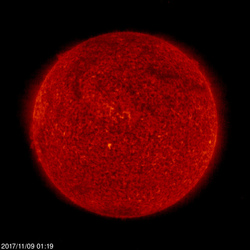 Predicted solar flux is 68 on November 9-11; 69, 70, and 72 on November 12-14; 73 on November 15-16; 75 on November 17-30; 72 on December 1; 71 on December 2-3; 70 on December 4-10; 71, 72, 73, 73, and 74 on December 11-15, and 75 on December 16-23.
Predicted solar flux is 68 on November 9-11; 69, 70, and 72 on November 12-14; 73 on November 15-16; 75 on November 17-30; 72 on December 1; 71 on December 2-3; 70 on December 4-10; 71, 72, 73, 73, and 74 on December 11-15, and 75 on December 16-23.







